In September 2020, the Urban Development Institute of Australia (UDIA) lodged a submission with the Commonwealth Government seeking an extension and redesign of the successful HomeBuilder scheme.
The submission recognised the value the Scheme is providing in sustaining Australia’s economy and residential construction sector through the early phases of the pandemic, but also highlighted research from Urbis that presented forward-looking forecasts resulting from low population growth projections influenced significantly by a drastic decrease in net overseas migration (NOM).
The submission made an economic case for an extension to HomeBuilder – given the industry contributes 7.5 percent of the nation’s economic output and directly and indirectly generates over 750,000 jobs – as well as a series of recommendations designed to maximise its value.
Simultaneously, UDIA commissioned ‘real time’ data and insights from industry participants – both to establish the state and trajectory of the market, as well as test the need for an extension and redesign of HomeBuilder.
The Four Key Takeaways from UDIA’s Industry Research:
- 55.3 percent of respondents saw their average monthly sales decline in the period from March-May 2020 (at the time of the initial COVID19 lockdowns), compared with the prior six months. Another 19.5 percent stagnated
- 91.4 percent of the industry saw an increase in average monthly sales from June to September 2020 once HomeBuilder was announced – including over half of all respondents enjoying a jump of more than 50 percent
- The industry on balance expects to sustain sales for the balance of calendar year of 2020 due to the upside of the Government’s stimulus measures
- Absent a continuation of HomeBuilder, almost 66 percent of the industry anticipate a significant drop in sales volumes in 2021.
These findings support UDIA’s submission that the Federal Government unveil funding for a further tranche of its successful HomeBuilder scheme, broaden its application and timeframes to capture a wider spectrum of housing typologies and ensure there are smooth transitional arrangements to sustain the industry, allowing stimulus of local demand to make up part of the shortfall from reduced migration.

